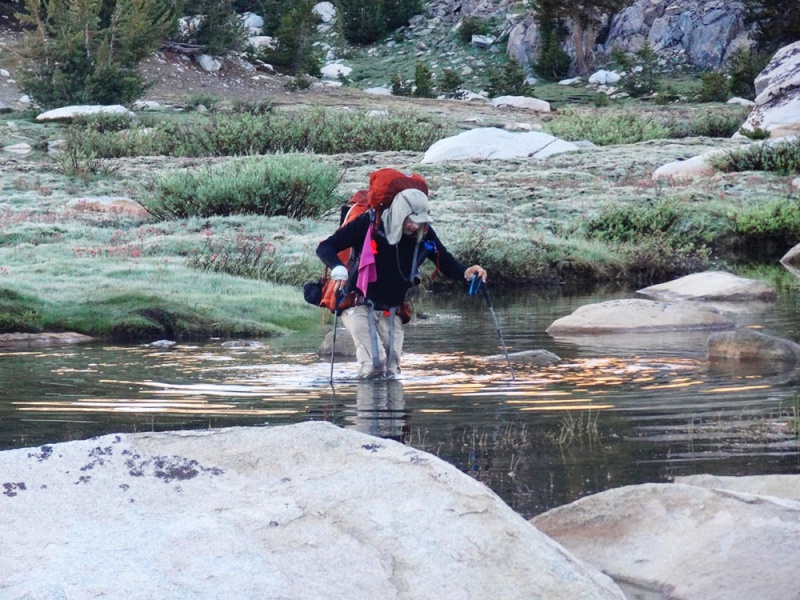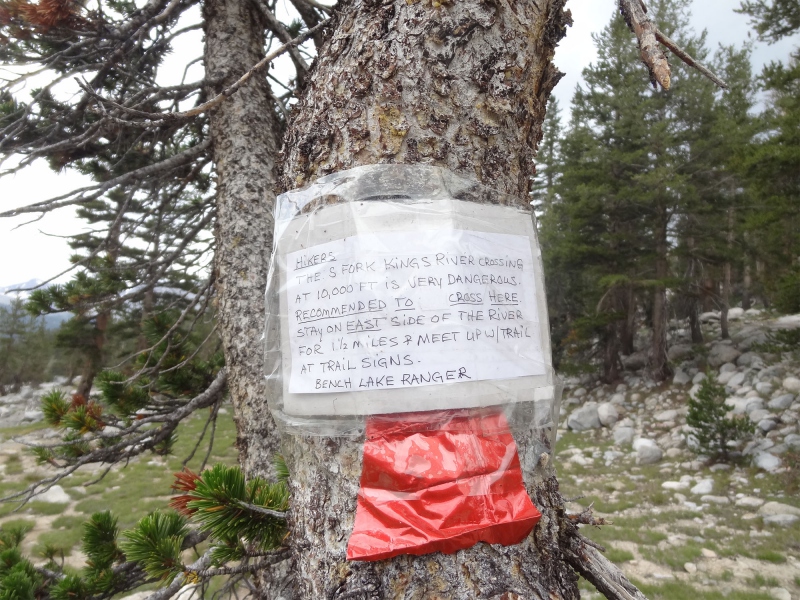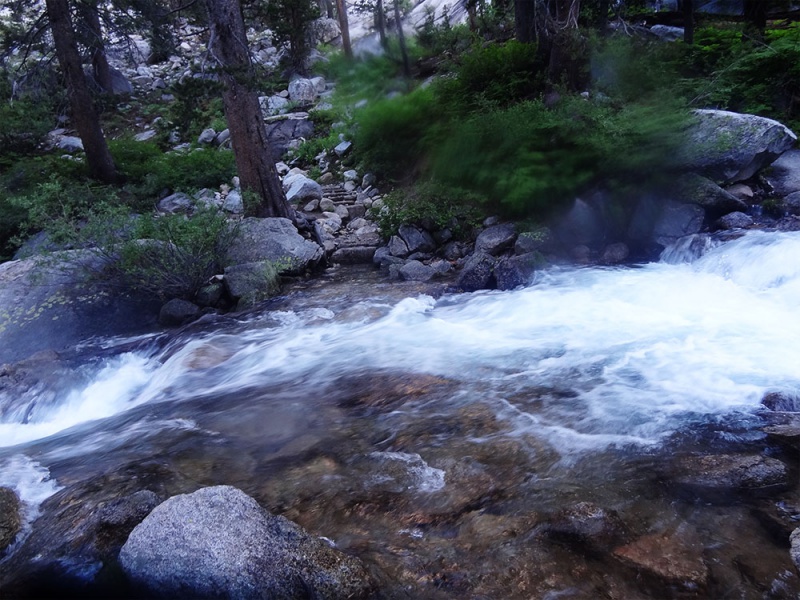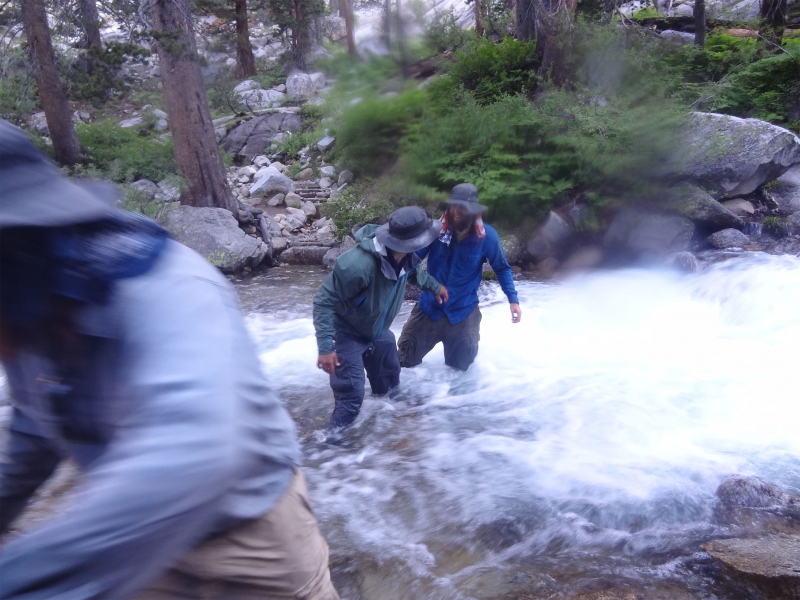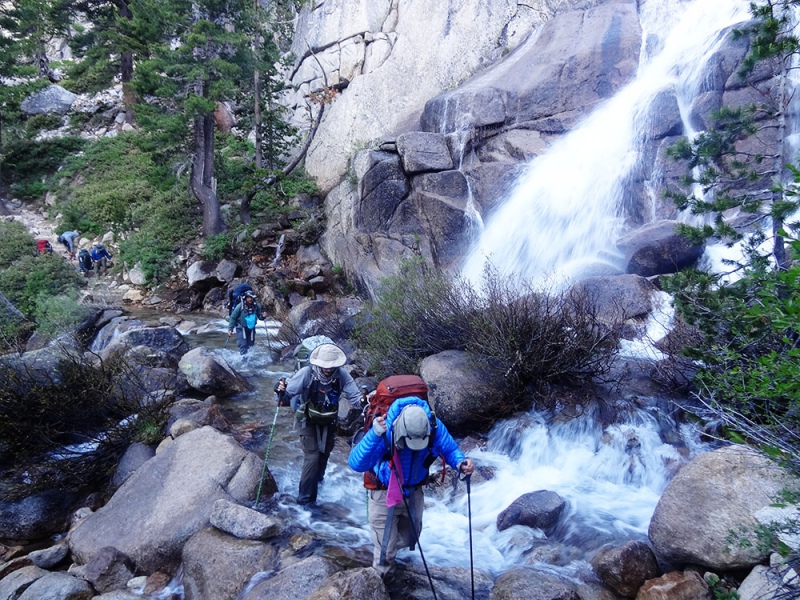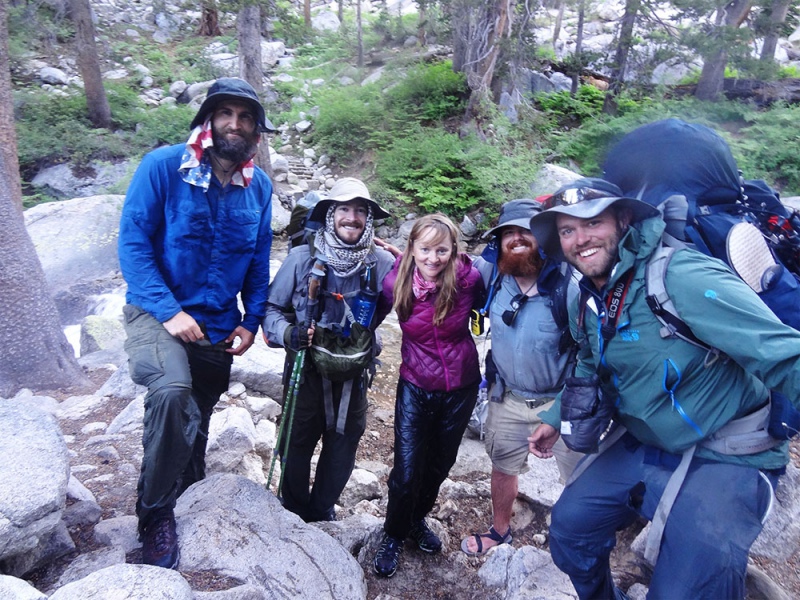Stream Crossing On The JMT
In: Trail Notes
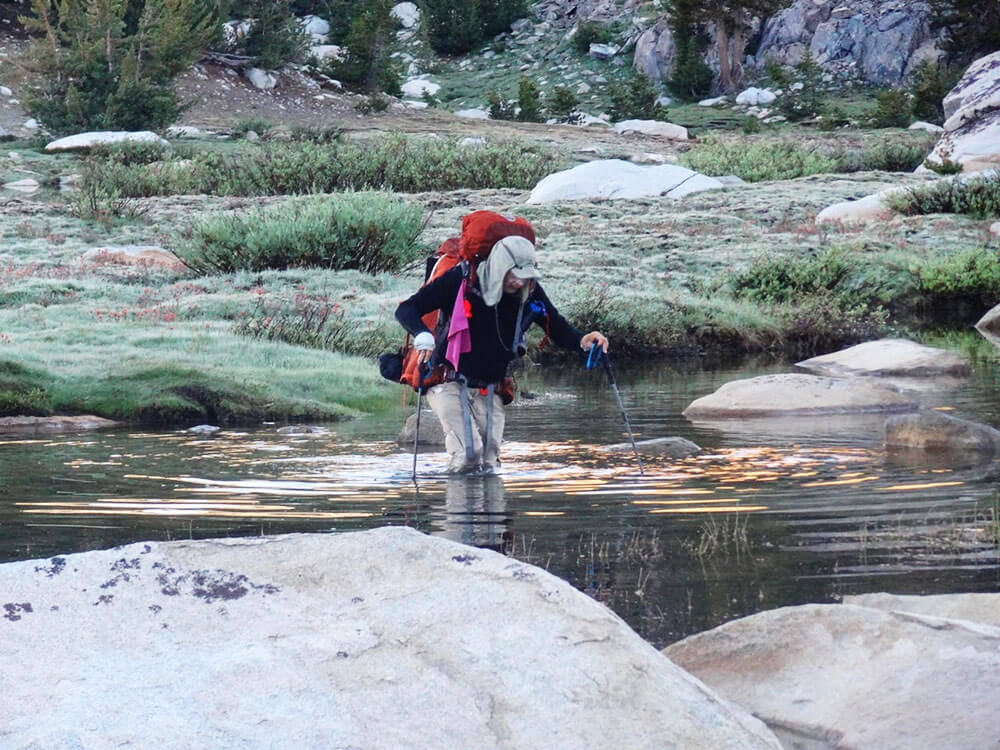
Stream crossing is not something I thought much about prior to my 200 miles JMT trek in the Sierras. I did not take much into consideration water level and neither did I know anything about safely crossing the streams. Mentally, I was not prepared at all to what I actually experienced on the trail. I lost one of my hiking poles, my hat and almost lost my entire pack while crossing the streams. The trail mentally paralyzed me every time I encountered a crossing. I have never been so afraid of water like I have been on the John Muir Trail. I was afraid of slip and falls, ankle injury, and many other things. Not knowing how to cross safely is what terrified me the most. Thankfully, I learned to face my fears and ask for help. Here is a list of tips I received from fellow hikers I met on the trail.
1. Consider the time of day
One of the first things I learned is to always consider the time of day when crossing the streams.Stream flow is often highest in the afternoon and evening. Camping and waiting until morning is the best next step. Morning can be sometimes safest to cross when the creek might be lower. Maps are your best tools to assess how big the drainage is.
2. Assess the rivers speed
Another lesson, I found it to be helpful is assessing the river speed before crossing. If the streams are moving faster than walking pace, it is not safe. Very helpful tip to know. Look for a spot in the river that is not moving faster than a walking speed and no deeper than knee height.
3. Face Upstream
Another lesson, I learned while crossing the stream is to always face upstream. Prior to crossing the stream I learned to face the river upstream and alwasy have three point of contact. Since I only had one hiking pole left, I ended up finding a good wooden staff on the trail that provided enough stability and support for my entire JMT Trek.
you might also like
-
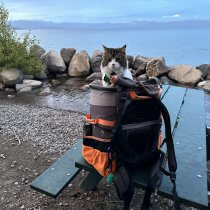
Camping with cats in Lake Tahoe
May 25, 2024
-
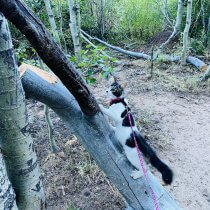
Sunrise Hike at Spooner Lake
September 3, 2022
-
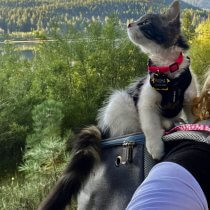
Hiking with Pasha
August 26, 2022
